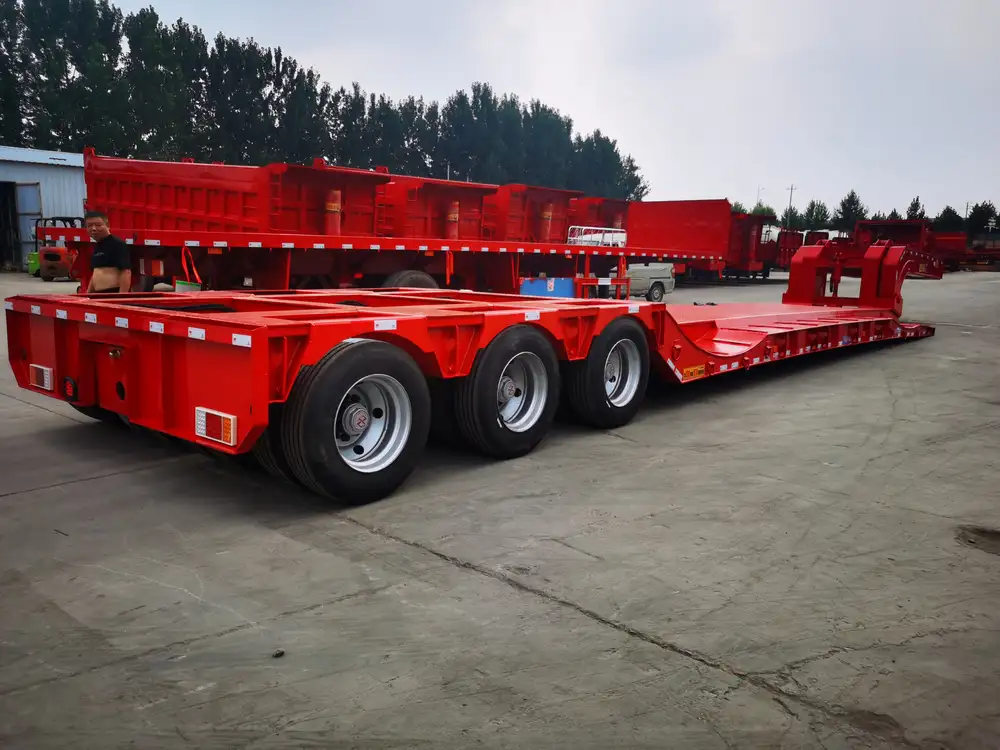Introduction to Semi-Trailer Specifications
When it comes to optimizing transportation and ensuring compliance, understanding the dimensions and specifications of semi-trailers becomes critical. Among these dimensions, the maximum permitted forward distance stands out as an essential parameter that influences both safety and operational efficiency. This article delves into this specification to provide an exhaustive overview designed for manufacturers, operators, and fleet managers.
What is the Forward Distance of a Semi-Trailer?
The forward distance of a semi-trailer is defined as the measurement from the axle of the truck tractor (the vehicle pulling the trailer) to the frontmost point of the trailer itself. This measurement is pivotal in determining the maneuverability and stability of the vehicle while on the road.
| Measurement | Description |
|---|---|
| Axle Distance | Distance from the rear axle of the tractor |
| Requester Point | Frontmost point of the semi-trailer |
| Maximum Allowed | Varies based on jurisdiction and trailer type |

Maximum Permitted Forward Distance: A Regulatory Overview
Laws governing the maximum permitted forward distance for semi-trailers vary by state and country. Understanding these regulations is crucial for compliance and safety.
Federal Regulations (United States): In the U.S., federal law stipulates certain dimensions and limits to ensure safety on highways. The maximum overall length that includes the forward distance is often regulated with specific restrictions based on the type of vehicle, load capacity, and trailer design.
European Union Regulations: Euro norms impose strict guidelines regarding vehicle dimensions, including semi-trailer lengths and their forward distances. Countries within the EU may have differing practices, but all adhere to a standard aimed at maintaining road safety and uniformity.
Comparison of Permitted Distances
| Region | Maximum Forward Distance (in) | Regulations |
|---|---|---|
| United States | 60-75 inches | Varies by state; federal guidelines apply |
| Canada | 72 inches | Provincial regulations dictate specifics |
| European Union | 55-59 inches | Adheres to EU legislation; varies per country |
Implications of Forward Distance on Semi-Trailer Performance
Maneuverability: The design of a semi-trailer directly affects its ability to maneuver in tight spaces. A longer forward distance can limit the turning radius, making it challenging for operators to navigate urban environments.
Safety: Keeping the forward distance within prescribed limits minimizes the risk of accidents. Greater forward distances can lead to instability during sharp turns or heavy braking, increasing the likelihood of rollovers or loss of control.
Payload Efficiency: The forward distance can also impact how weight is distributed across the trailer’s axles. Proper distribution is crucial for maintaining traction, especially during inclement weather.

Case Study: Navigational Challenges
Consider a fleet operating within an urban area characterized by narrow streets and sharp turns. A semi-trailer with a forward distance exceeding the maximum allowable limit may face issues such as:
- Inability to make sharp turns, leading to potential road blockages.
- Increased wear and tear on the vehicle’s steering system due to the added stress of navigating tight corners.
- Higher likelihood of damaging property or causing accidents due to miscalculations in turning radius.
Factors Affecting the Forward Distance
- Trailer Design: Standard designs vs. custom modifications.
- Load Type: Heavier loads require different considerations for stability and safety.
- Operational Environment: Urban vs. rural settings often dictate differing needs.
Measuring Forward Distance: A Practical Guide
To accurately measure the forward distance of a semi-trailer, follow these steps:
Select the Measurement Tool: Use a measuring tape or laser distance meter for precision.
Identify the Reference Points:
- Locate the rear axle of the truck tractor.
- Identify the frontmost point of the semi-trailer.
Measurement Process:
- Position the measuring tool at the axle’s center.
- Extend it to the frontmost point of the trailer.
- Record the measurement in both inches and centimeters for versatility.

Best Practices for Compliance and Efficiency
- Regular Inspections: Periodically measure the forward distance during inspections to ensure compliance with safety standards.
- Driver Training: Equip drivers with knowledge about how forward distance impacts vehicle dynamics to promote safer operation.
- Adjusting Load: Modify load distribution based on the trailer design to optimize the forward distance and enhance stability.
Conclusion: Importance of Understanding Forward Distance
The maximum permitted forward distance of a semi-trailer is a crucial specification that impacts numerous aspects of transportation safety and operational efficiency. Manufacturers and operators must navigate a complex landscape of regulations while ensuring their semi-trailer fleets are compliant, safe, and effective for their intended purposes.
By comprehensively understanding the limitations and implications of forward distance, stakeholders can make informed decisions that promote not just regulatory compliance, but also the safety and efficiency of their operations. Awareness of these issues can significantly enhance overall performance on the road while adhering to the necessary legal frameworks.
Frequently Asked Questions
What happens if a semi-trailer exceeds the maximum forward distance limit?
- Exceeding the maximum limit can lead to fines, increased insurance rates, and, more importantly, heightened safety risks.
How can I ensure compliance with forward distance regulations?
- Regular vehicle inspections, training for drivers regarding safe maneuverability, and consulting local regulations will help keep your fleet compliant.
Are there advanced trailer designs that allow for a greater forward distance?
- While some designs may optimize space, complying with regulations is non-negotiable. Any modification should be discussed with regulatory authorities or a transportation consultant.
How does forward distance impact fuel efficiency?
- Although indirect, a well-balanced forward distance can lead to better weight distribution, resulting in improved fuel efficiency and reduced wear on the vehicle.
By addressing these vital facets regarding the forward distance of semi-trailers, stakeholders in the transportation industry can enhance their operations dramatically. Understanding the complexities involved ensures safety, compliance, and operational superiority.



